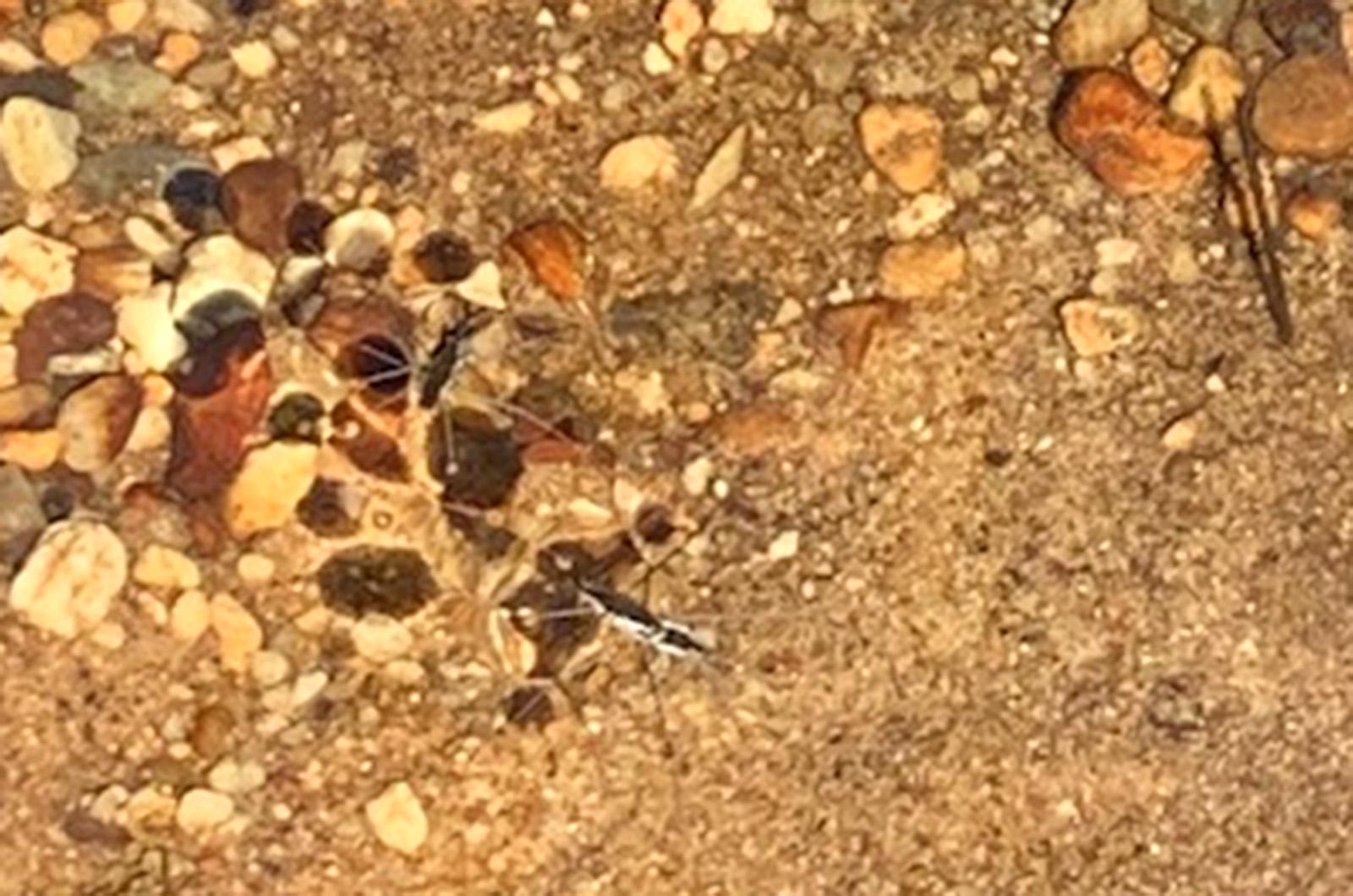Walking on water is a miracle that few can accomplish.
The biblical story of this amazing feat (or feet) inspires awe and requires faith. Nature has her own water walkers whose abilities can be described by science (which some believe is ultimately explained by a divine source).
Water striders — also known as Jesus bugs, water skeeters, water skippers, water scooters, water gliders, water skimmers, pond skaters and puddle flies — have emerged and are dancing their way atop water bodies near you. Last week, I observed them, and their resultant ripples, at Fulling Mill Brook Preserve, though you can see them at many slow-moving fresh water ponds, streams and even sometimes puddles.
Those ripples that are created and detected serve many purposes. As aquatic predators, water striders feed on insects that live or fall into their water homes, and they can find their food by sensing the ripples that the prey create. Water striders catch their food by grabbing prey with their preapical claws which are found midway on their legs (like praying mantises), and eat them by injecting salivary enzymes with their proboscis and sucking up the fluid that the organisms become.
This seems like a tough way to go, and it is even more disconcerting when you learn that water striders are not very discriminating eaters, having no concerns about consuming members of their own species and even family since they reproduce via eggs that hatch into (clearly delicious to them) nymphs.
When not consuming their brethren, water striders communicate with potential mates or adversaries by drumming the water with their legs. Drumming can produce ripples of different frequencies that relay different messages. Low-level frequencies of three hertz are for courtship communications. Higher frequencies of 10 hertz send signals of threat, while stronger 25 hertz are meant to repel any potential aggressor.
These signals are made by the water striders’ six pairs of legs. These legs are also the reason that water striders can live on the surface of the water. Organisms that live on the water’s surface are called neuston or pleuston (in the vein of nekton and plankton). This surface stance works on water, but not on other liquids such as oil.
Water’s high surface tension helps, but the real reason that these insects stay on top is their hairy legs. The dense hairs, called hydrofuge piles, have more than one thousand microhairs per millimeter. These hairs create a hydrophobic (water-fearing) surface that is not only resistant to water, but in the case of rain or waves will hold air and keep (or propel) the creature on the surface of the water. These legs are more buoyant than duck feathers. Water striders are effectively undrownable.
Those legs can also accomplish other miraculous movements and are also built for speed, being able to move 100 of their body lengths per second. This is akin to a six-foot human going 400 miles per hour.
Springing forth, water striders symbolize the miracle of the season and the sorcery of science. Their unsinkable spirit allows them to be on top of the world.
Suzan Bellincampi is director of the Felix Neck Wildlife Sanctuary in Edgartown, and author of Martha’s Vineyard: A Field Guide to Island Nature and The Nature of Martha’s Vineyard.




Comments
Comment policy »